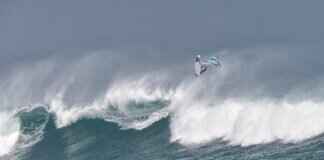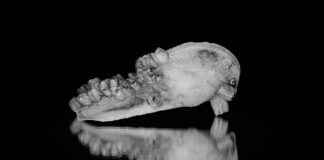Dire Wolves Reborn: The Controversial Resurrection at La Brea Tar Pits
In a jaw-dropping revelation that shook the scientific community, researchers in Texas made headlines with the successful resurrection of the long-extinct dire wolf. While initially capturing the attention of “Game of Thrones” enthusiasts, this groundbreaking achievement sparked a wave of questions and skepticism among experts at the Natural History Museum’s La Brea Tar Pits.
Curator Kayce Bell, a prominent figure at the museum, raised critical inquiries about the authenticity of these reanimated creatures. She pointed out that the genetically engineered wolves bore physical traits resembling dire wolves but were essentially a modified version of gray wolves. Despite the remarkable technological advancements showcased in this experiment, Bell emphasized the importance of accurate terminology to prevent misleading narratives.
The biotechnology company Colossal Biosciences, based in Dallas, proudly announced the birth of three healthy dire wolf pups following a meticulous process spanning over 18 months. The team managed to extract and sequence ancient DNA from two dire wolf fossils, one dating back 13,000 years in Ohio and another from 72,000 years ago in Idaho. By identifying specific gene variants unique to dire wolves and conducting multiplex gene editing with gray wolf DNA, scientists successfully brought these ancient creatures back to life.
Beth Shapiro, the chief science officer at Colossal Biosciences, acknowledged the skepticism surrounding this groundbreaking achievement. She admitted to the challenges of effectively communicating this scientific feat and expressed a desire for better clarity in conveying the intricacies of their work. Despite the abundance of dire wolf fossils in Southern California, extracting DNA from local samples has been a longstanding struggle due to environmental factors like urban development and extreme heat.
The La Brea Tar Pits stand as a testament to the dire wolf’s historical significance, boasting an unparalleled collection of over 4,000 dire wolf fossils. Associate curator Emily Lindsey highlighted the rich biodiversity of these creatures, emphasizing their adaptability and wide range of habitats before their extinction 10,000 years ago. The three reanimated pups, named Romulus, Remus, and Khaleesi, now reside in an ecological preserve spanning 2,000 acres, meticulously cared for by a dedicated team.
Challenges of Cloning and Conservation
The concept of de-extinction has sparked debates within the scientific community, with experts like Lindsey and Bell advocating for a stronger focus on conservation efforts. While acknowledging the potential benefits of cloning technologies in preserving endangered species, they caution against diverting resources from critical conservation initiatives. The delicate balance between de-extinction and conservation remains a topic of ongoing discussion.
Colossal Biosciences’ ambitious goals extend beyond dire wolves, with plans to revive other extinct species like the woolly mammoth, dodo, and thylacine. CEO Ben Lamm underscores the symbiotic relationship between de-extinction and conservation, viewing these initiatives as complementary rather than contradictory. By leveraging cutting-edge technologies, Colossal aims to inspire a new generation of scientists and conservationists to safeguard our planet’s biodiversity.
Exploring the Boundaries of Science and Ethics
As the scientific world grapples with the implications of de-extinction, ethical considerations loom large in the background. The blurred lines between resurrecting extinct species and preserving endangered ones raise complex moral dilemmas that require careful reflection. While the allure of reviving ancient creatures captivates our imagination, the long-term consequences of playing “Mother Nature” remain a subject of intense debate.
In the midst of these discussions, the La Brea Tar Pits stand as a poignant reminder of our planet’s rich history and the fragile balance of life. Lindsey extends an open invitation to curious minds, inviting them to witness the legacy of these majestic creatures firsthand. As the world witnesses the resurrection of dire wolves, one thing remains certain – the boundaries of science and nature are continually being challenged, inviting us to ponder the mysteries of our shared past and future.














